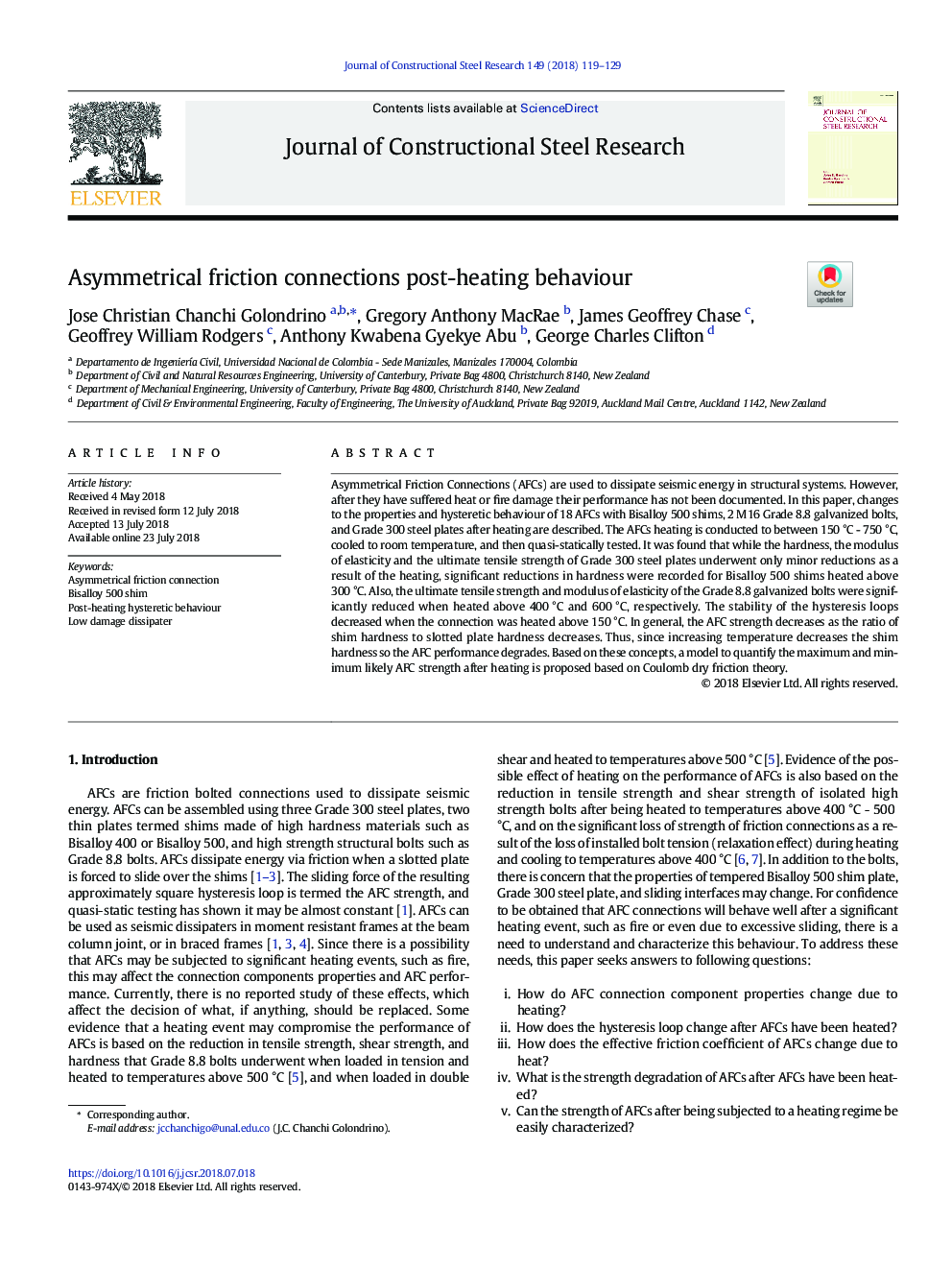| Article ID | Journal | Published Year | Pages | File Type |
|---|---|---|---|---|
| 6750301 | Journal of Constructional Steel Research | 2018 | 11 Pages |
Abstract
Asymmetrical Friction Connections (AFCs) are used to dissipate seismic energy in structural systems. However, after they have suffered heat or fire damage their performance has not been documented. In this paper, changes to the properties and hysteretic behaviour of 18 AFCs with Bisalloy 500 shims, 2â¯M16 Grade 8.8 galvanized bolts, and Grade 300 steel plates after heating are described. The AFCs heating is conducted to between 150â¯Â°C - 750â¯Â°C, cooled to room temperature, and then quasi-statically tested. It was found that while the hardness, the modulus of elasticity and the ultimate tensile strength of Grade 300 steel plates underwent only minor reductions as a result of the heating, significant reductions in hardness were recorded for Bisalloy 500 shims heated above 300â¯Â°C. Also, the ultimate tensile strength and modulus of elasticity of the Grade 8.8 galvanized bolts were significantly reduced when heated above 400â¯Â°C and 600â¯Â°C, respectively. The stability of the hysteresis loops decreased when the connection was heated above 150â¯Â°C. In general, the AFC strength decreases as the ratio of shim hardness to slotted plate hardness decreases. Thus, since increasing temperature decreases the shim hardness so the AFC performance degrades. Based on these concepts, a model to quantify the maximum and minimum likely AFC strength after heating is proposed based on Coulomb dry friction theory.
Related Topics
Physical Sciences and Engineering
Engineering
Civil and Structural Engineering
Authors
Jose Christian Chanchi Golondrino, Gregory Anthony MacRae, James Geoffrey Chase, Geoffrey William Rodgers, Anthony Kwabena Gyekye Abu, George Charles Clifton,
